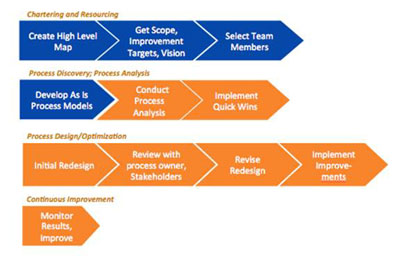This article covers an issue within Business Process Management (BPM) redesign which is often not fully discussed. Frequently, development groups are eager to get the team fully engaged as quickly as possible. Looking at “as is” situations (examining, modeling) may receive slight attention as being “bygones” – “Let’s start with a clean slate.” The issue is deciding how quickly to begin computerized development after a project or analysis has been scheduled.
There are different aspects of business growth and development. One faction may wish to apply technology to change its business as quickly as possible, while another may prefer to proceed cautiously and methodically, moving only after research and through using a well-tested methodology. Which is correct? The classic answer is “It depends.”
























